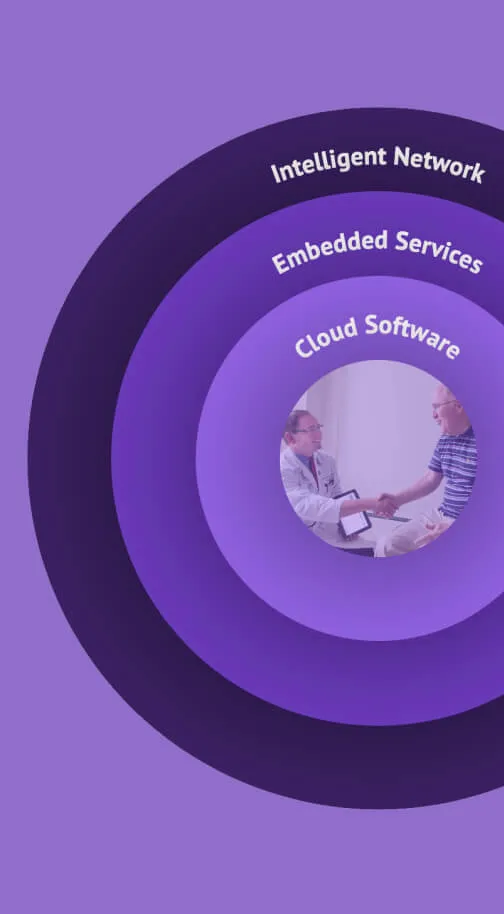Vital patient communication tool, especially during pandemic
Even before the pandemic hit, the patient portal was a critical communication tool for practices trying to keep in touch with patients. At athenahealth, our data show that most portal activity is triggered by a push message of some kind — an appointment reminder, new lab results, or a billing statement.
Knowing that most patients are responding to outreach from the practice rather than going to the portal on their own, practices can and should use the portal as a way to proactively stay connected with patients.
Craig Tidwell, M.D. of Associates in Obstetrics and Gynecology in Dalton, GA, notes that maintaining patient relationships requires frequent communication, and that is why he is an enthusiastic and prolific user of the patient portal. In fact, he thinks of it as his “primary tool for engaging with patients.”
Tidwell uses the portal to remind patients about appointments or share lab results, but he has also used it to reach out to a patient who recently received a cancer diagnosis just to check in and let them know he was thinking of them. The portal can go beyond logistics to help build and nurture physician-patient relationships, which is as important for providers as it is for patients. “Some physicians are worried about being loaded down with messages,” Tidwell says, “but I never get that feeling.”
During COVID-19, many practices are relying heavily on portal communications to keep patients informed about safety protocols, telehealth options, reopening schedules, and how to maintain important preventive care schedules. It is also proving to be a key tool in managing chronic conditions during the pandemic and making sure practices can continue to collect patient payments.
According to Misha Moore, Ph.D., of Green Tree Pediatrics in Chelsea, Michigan, “we use our automated campaigns — email, text, phone – and we can customize the message to let patients know it’s safe and it’s time to come in.” And often it has simply been about reassuring patients and helping them deal with the stress of this difficult time, another way to strengthen providers’ human relationship with patients.
Patient-centered workflows and tone
Using the portal to connect with patients means remembering the audience is patients, not healthcare professionals. That means removing the medical jargon and formality. Our research indicates that patients respond more to a friendly and welcoming tone, so athenahealth has designed our portal messaging accordingly, while still being professional and appropriate.
In the early days, patient portals were often designed more for the practitioners sending the messages than for the patients receiving them. But patients aren’t in the portal multiple times a day and aren’t looking for density of clinical information — they want it to be as easy and efficient as possible. Because they may only use the portal a few times a year, they need an experience that requires no training, no time to learn to use the tools.
According to Claire Kohler, director of experience design at athenahealth, “we need to design for someone who comes with fresh eyes every time.” The goal for Kohler’s team is creating clear, concise patient workflows that reduce clicks, and language focused just on what the patient needs to do. For example, if a patient receives a reminder to pay a bill, one click should link them directly to that bill and make it easy for them to act.
Diversity and accessibility are factors in portal design
Patient-centered design means more than just a clean user interface. It also means thinking about the full range of patients who can and should be using the portal. One of the most obvious examples is language. Knowing that English may be a second language for some users, the athenahealth portal is designed to use simple, clear language, available in both Spanish and English.
Another concern is accessibility, making sure the portal will work for a patient with visual, auditory, motor, or cognitive impairments. It should be compatible with assistive technologies like screen readers and be usable with large typeface — especially since our research shows portal users actually skew older, mainly over the age of 55.
Given that many portal users will be in the middle of a medical episode, it is crucial that the portal be as accessible and easy-to-use as possible for a wide range of patients, rather than adding to their stress.
Consumer-grade mobile-first design
The majority of portal users are accessing it on a mobile device. This necessitates a design optimized for mobile — with more white space, more illustrations, and a single task per screen. At athenahealth, the experience design team is working to reduce subsections within menus and really streamline navigation so mobile users don’t even have to think about how to use it; it just flows naturally.
Beyond that, portals need to keep up with other consumer-grade technology experiences. They should not just work, but be as satisfying as patients’ other tools and apps.
The goal is to create a portal that provides patients with a holistic view of their health and enhances communication with their care team, while being easy and enjoyable to use on any device.
Patients and providers alike should come to see the portal as indispensable and a benefit. According to Tidwell, “I can’t imagine life without it. I get compliments on the patient portal at least 10 times per day.”
Lia Novotny is contributing editor of athenahealth's Knowledge Hub.












